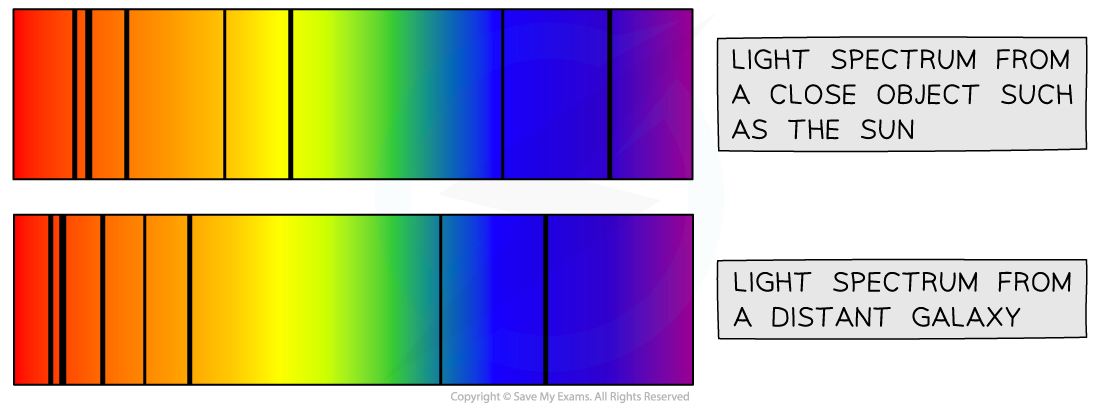Doppler Shift (Edexcel International A Level (IAL) Physics): Revision Note
Exam code: YPH11
Doppler Shift
If a wave source is stationary, the wavefronts spread out symmetrically
If the wave source is moving, the waves can become squashed together or stretched out
If the wave source is moving towards an observer the wavefronts will appear squashed
If the wavefront is moving away from an observer the wavefronts will appear stretched out
Therefore, when a wave source moves relative to an observer there will be a change in the observed frequency and wavelength

Wavefronts are even in a stationary object but are squashed in the direction of the moving wave source
A moving object will cause the wavelength, λ, (and frequency) of the waves to change:
The wavelength of the waves in front of the source decreases (λ – Δλ) and the frequency increases
The wavelength behind the source increases (λ + Δλ) and the frequency decreases
Note: Δλ means 'change in wavelength'
The actual wavelength emitted by the source remains the same
It is only the wavelength that is received by the observer that appears to have changed
This effect is known as the Doppler effect or Doppler shift
The Doppler effect is defined as:
The apparent shift in wavelength occurring when the source of the waves is moving
The Doppler effect, or Doppler shift, can be observed using any form of electromagnetic radiation
It can be observed by comparing the light spectrum produced from a close object, such as our Sun, with that of a distant galaxy
The light from the distant galaxy is shifted towards the red end of the spectrum (There are more spectral lines in the red end)
This provides evidence that the universe is expanding

Comparing the light spectrum produced from the Sun and a distant galaxy

Unlock more, it's free!
Did this page help you?